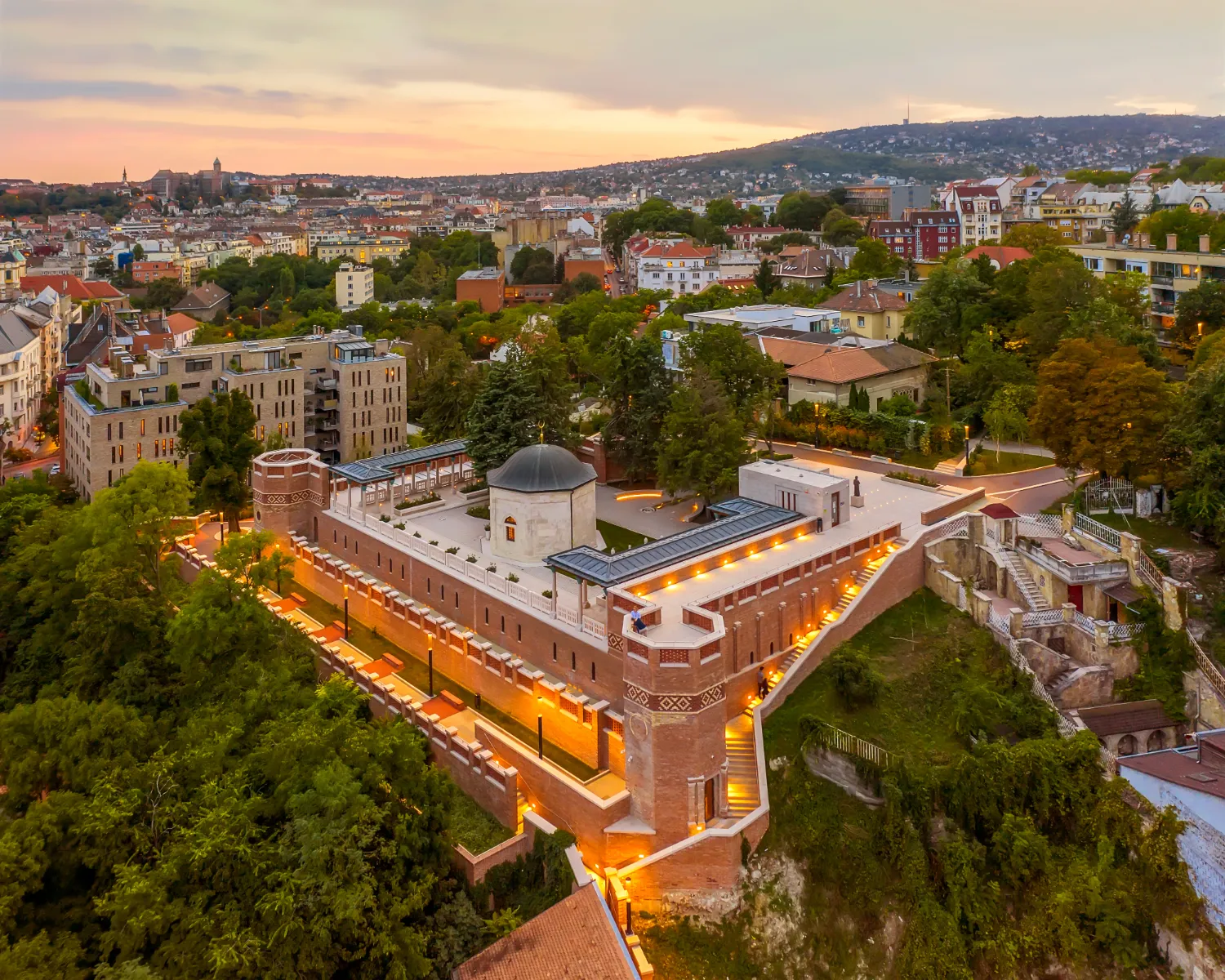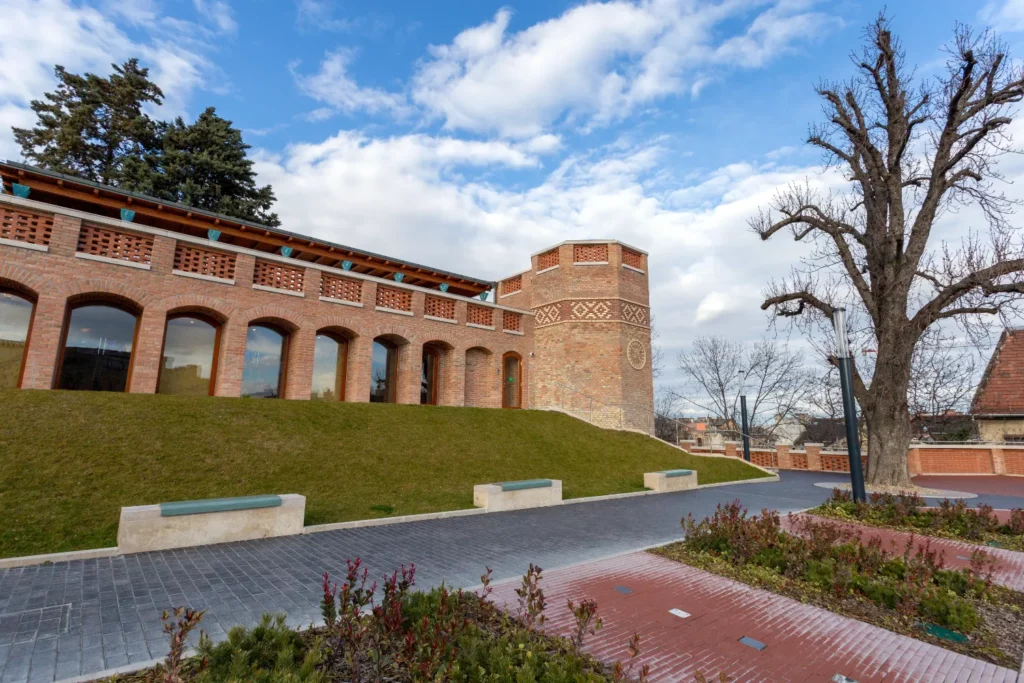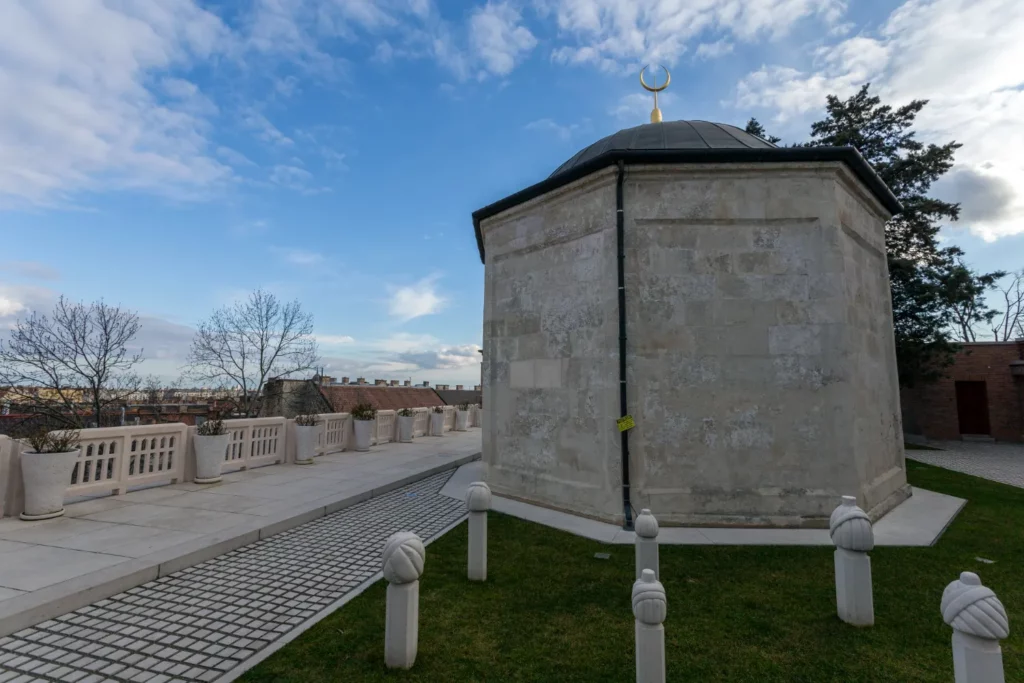A Focused View of the 16th-Century Tomb of Gul Baba in Ottoman Hungary

Updated On: April 15, 2024 by Marwa Abdel Moniem
We all love to travel for fun, but an educational trip might be enjoyable every once in a while. Learning is part of the travelling experience, especially if you are offered a chance to learn about a country’s past with all the mysteries it holds. In this article, we will shed light on the Tomb of Gul Baba in Budapest, also giving you a glimpse of the history of Ottoman Hungary.
It is probably not on “the best of Budapest” list, but the Tomb of Gul Baba is a hidden gem in the Hungarian capital that surely deserves a visit. Read on to learn more about that northernmost place of pilgrimage for Muslims before you go!
Table of Contents
The History of Gul Baba
Not much is known about Gul Baba that can give you an insight into the life of this Ottoman dervish. Only a glimpse of the last year of his life could be known. He died the same year he arrived in Hungary, in 1541, as part of the Turkish army accompanying Sultan Suleiman I (the Magnificent) to conquer then Buda.
But the general information about Gul Baba suggests that he followed the soldier-and-clergyman Bektas order. No wonder he was in the army that conquered Buda in 1541! Legend has it that Gul Baba died on 2 September 1541, on the day commemorating the capture of Buda.
It is said that Sultan Suleiman I (the Magnificent) carried Gul Baba’s coffin to his burial place on a hill near the then Gunpowder township on the Danube bank.
On that day, a thanksgiving ceremony was held in Matthias Church, which became a mosque after the Ottoman conquest. To honour the fighting Muslim clergyman, a solemn funeral, the first Muslim religious ceremony ever in Budapest, was held and was attended by Sultan Suleiman I (the Magnificent).
Between 1543 and 1548, a tomb was built above the grave of Gul Baba by then pasha of Buda Yahyapaşazade Mehmet. The tomb of Gul Baba has become a Muslim pilgrimage place and a tourist attraction ever since.
Respected among the Ottomans, Gul Baba is known in Hungary as the “Father of Roses”. Gul is the Turkish word for rose, and Baba is the Turkish word for father — that’s why his tomb is that of the “Father of Roses”. Another story suggests that the Bektashi dervish had a fondness for roses and always wore a rose on his turban, which was why he came to be known as the “Father of Roses”.
The Ottoman Rule in Hungary (1541-1699)
For over 150 years, the Ottomans ruled the Kingdom of Hungary. Sultan Suleiman I (the Magnificent) was able to incorporate a portion of the Kingdom of Hungary into the Ottoman Empire in 1541 when the Turkish army conquered Buda.
While Sultan Suleiman I (the Magnificent) maintained control over the central wedge of the Kingdom of Hungary, King Ferdinand I ruled over the western and northern part, and János Szapolyai II was king of the Principality of Transylvania in the eastern part of the medieval Kingdom of Hungary. This partition of the Kingdom of Hungary into three parts started in 1541 and continued until 1699.
The remnants of Ottoman Hungary are very few that they sparsely dot the map — the Tomb of Gul Baba is one of those remaining prominent structures.
The Story of the Tomb of Gul Baba

Following the death of Gul Baba in the first year of Ottoman rule over medieval Hungary, a tomb was built in Buda above his burial place near Margaret Island. A shrine it has become — one that symbolises Islamic culture in Christian Europe.
It is an octagonal Ottoman tomb and a sacred place that houses the remains of Gul Baba. You must take off your shoes before entering. Entrance to the Tomb of Gul Baba is free to visitors of all faiths. Its structure and design make it a must-see.
Marvel at the Ottoman Architecture of the Tomb of Gul Baba!
This Turkish-styled memorial is something to see! Yes, it has undergone renovation several times over the past centuries, but its current shape is the closest to the original structure.
Built in the 1500s, the Tomb of Gul Baba features a shallow dome with lead plates and wooden tiles covering it, and the entrance to the shrine faces the east. Unfortunately, only fragments of the original interior frescoes with Quranic inscriptions could still be seen through the walls, which are now decorated with coloured tiles that bear modern motifs depicting 16th-century Istanbul. A row of ogee-lancet bricks is the only ornament found at the tomb.
Inside, a wooden coffin decorated with a turban cannot be overlooked. A chestnut tree dating back to the late 1800s is still near the Tomb of Gul Baba. Now you know why it is such a famous monument since it also boasts a sophisticated landscape — it is both an Ottoman architectural and a natural beauty!
The land on which the tomb stands was later owned by János Wagner, who provided maintenance to the site and allowed visits by Muslim pilgrims from the Ottoman Empire. In 1885, a Hungarian engineer was commissioned by the Ottoman government to renovate the shrine.
In the 90s, the governments of Hungary and Turkey agreed to build an Islamic centre and a mosque near the mausoleum of Gul Baba. A library and a museum, which includes rich oriental prayer carpets, copies of the Holy Quran and some 16th-century devotional items, are also part of the complex.
The Tomb of Gul Baba was declared a national monument of Hungary in 1914. It is located in the centre of the mausoleum complex, which also includes a fountain, a terrace and flowerbeds.
Situated on a hill, the Tomb of Gul Baba has a terrace that offers a magnificent view of Budapest — you will like it over there!
Restoration of the Tomb of Gul Baba
Now a property of Turkey, the Tomb of Gul Baba was reshaped in 1960 and 1961, and later in 1996. A significant renovation of the mausoleum was completed in October 2018 and was bankrolled by the Turkish Cooperation and Coordination Agency (TIKA).
In 2017, the Hungarian state established a Gul Baba Heritage Foundation, which operates the tomb and the surrounding garden and acts to preserve the historical feature of the complex. A cultural centre and an exhibition hall could be found in the basement of the colonnade.
Made up of several rooms, the exhibition hall is designed to tell the story of Gul Baba and the Ottoman era in Hungarian history through a diorama show. Cultural events are also held at the conference hall.
The surrounding landscape was also restyled during the renovation of the Tomb of Gul Baba, with lavender and magnolia trees adding to the magnificence of the rose garden. What further accentuates the Ottoman spirit of the place is a Turkish café, which serves hot Ceylon tea and thick Turkish coffee. Make sure to try some!
You will enjoy visiting this historic Ottoman monument, which also features 21st-century technology to help deliver all information about this period home to visitors. The restoration of the Tomb of Gul Baba and its surrounding landscape has turned it into a fantastic tourist attraction.
The Tomb of Gul Baba: An Award-winning Monument
Completely renovated in 2018, the Tomb of Gul Baba was granted two awards of excellence in the same competition from the International Real Estate Federation (FIABCI). The monument won the golden award for Public Infrastructure and the silver award for Heritage at the 2020 Prix d’Excellence Awards.
FIABCI had evaluated prestigious projects and decided to give the award of excellence to the Tomb of Gul Baba for its superior architectural quality and landscape design.

The Rosegarden of Gul Baba’s Tomb
Surrounding the secluded Tomb of Gul Baba is a rose garden, which has been enlarged during the restoration of this unique site in Budapest. This three-levelled terraced garden also has a promenade that leads to the shrine of the Bektashi dervish. This terraced garden is full of roses, fruit trees and lavenders that visitors will surely admire.
How to Reach the Tomb of Gul Baba?
The Tomb of Gul Baba is found in the district of Rózsadomb (Rose Hill) on Mecset Street, which significantly means “mosque”. You can walk down Gul Baba Street, then turn left and ascend the stairs to the mausoleum or go on a short but steep walk from Margaret Bridge to the sacred Muslim place.
Paying a visit to the Tomb of Gul Baba will enrich your knowledge about the history of Ottoman Hungary. It will also be a good chance for you to see the Ottoman architecture of Eastern Europe with a touch of modern technology.
If you have reached this far in the article, you have probably made up your mind whether or not to visit the Tomb of Gul Baba. Suppose you will, don’t forget to share your reviews about this tourist attraction. Hopefully, you will come back with all the good stories to tell!






